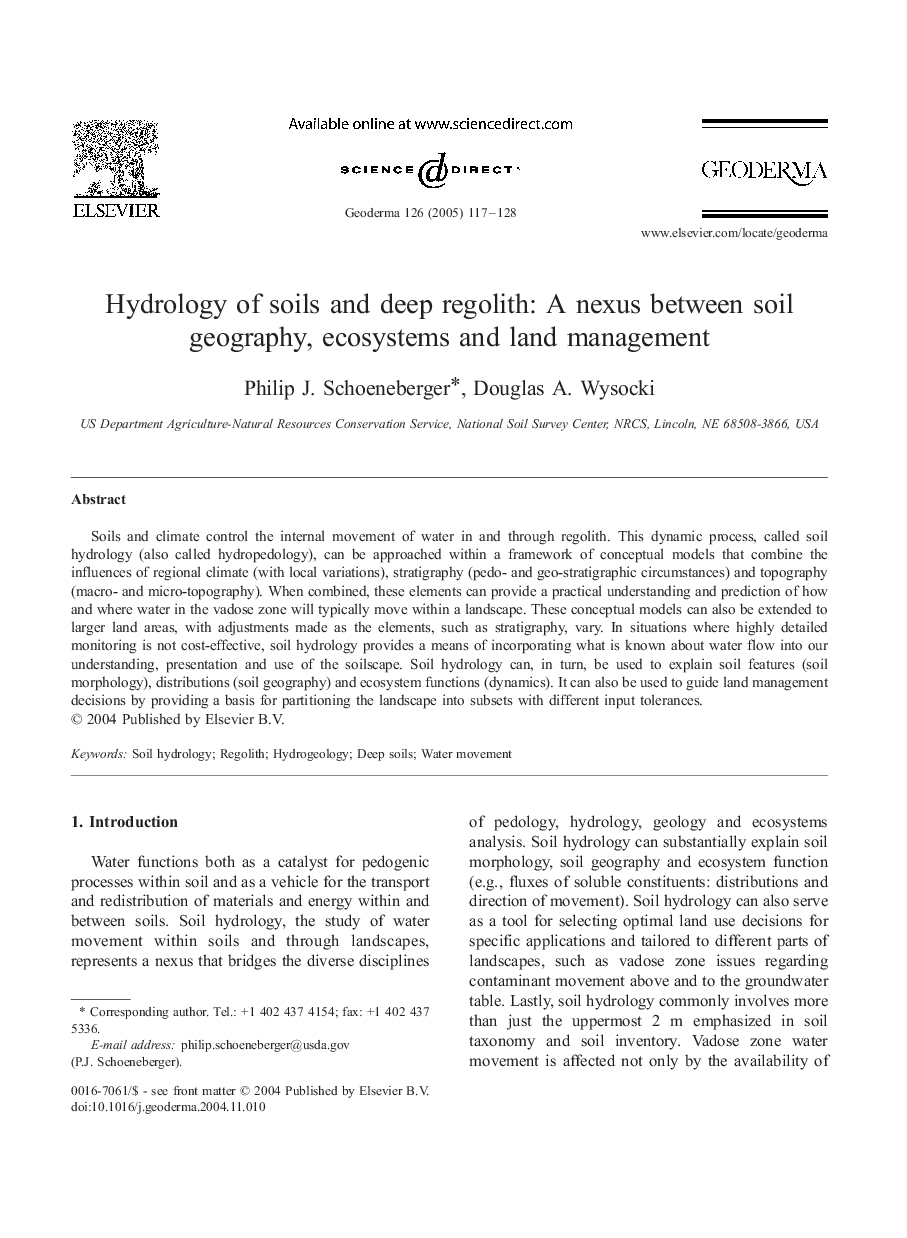| Article ID | Journal | Published Year | Pages | File Type |
|---|---|---|---|---|
| 9490463 | Geoderma | 2005 | 12 Pages |
Abstract
Soils and climate control the internal movement of water in and through regolith. This dynamic process, called soil hydrology (also called hydropedology), can be approached within a framework of conceptual models that combine the influences of regional climate (with local variations), stratigraphy (pedo- and geo-stratigraphic circumstances) and topography (macro- and micro-topography). When combined, these elements can provide a practical understanding and prediction of how and where water in the vadose zone will typically move within a landscape. These conceptual models can also be extended to larger land areas, with adjustments made as the elements, such as stratigraphy, vary. In situations where highly detailed monitoring is not cost-effective, soil hydrology provides a means of incorporating what is known about water flow into our understanding, presentation and use of the soilscape. Soil hydrology can, in turn, be used to explain soil features (soil morphology), distributions (soil geography) and ecosystem functions (dynamics). It can also be used to guide land management decisions by providing a basis for partitioning the landscape into subsets with different input tolerances.
Related Topics
Physical Sciences and Engineering
Earth and Planetary Sciences
Earth-Surface Processes
Authors
Philip J. Schoeneberger, Douglas A. Wysocki,
